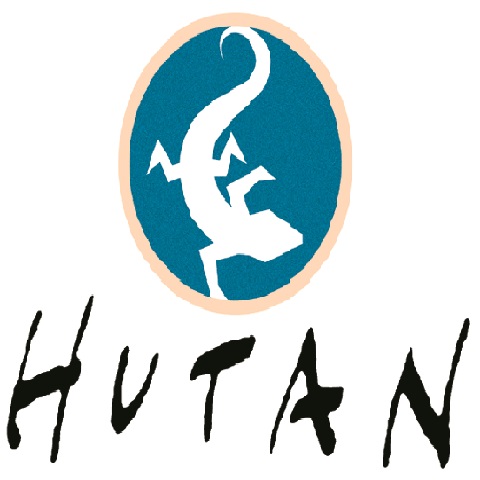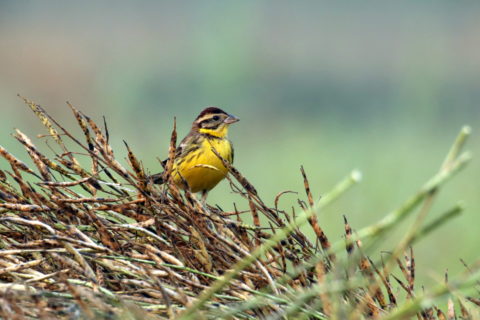Conservation Actions
Conservation and Research Actions UnderwayCITES Appendix I. The Helmeted Hornbill Working Group was created in September 2015 to bring attention to the crisis affecting the species (Collar 2015, Jain et al. 2018). In Thailand, poachers have been encouraged to become hornbill observers and guides for tourists (Hii 2015). After a poaching of Helmeted Hornbill in southern Thailand in September 2019, Thai conservationists also pushed a proposal for upgrading its conservation status to preserved wildlife under the Wildlife Preservation and Protection Act Thailand B.E. 2562 (J. Teampanpong in litt. 2020). The escalating demand for and trade in the species prompted the adoption of a resolution (WCC-2016-Res-009) on The Conservation of the Helmeted Hornbill at the IUCN World Conservation Conference (WCC), urging international action and support for local conservation efforts and calling on governments to address legislative, policy or enforcement gaps and enhance awareness of applicable laws (Jain et al. 2018). At the 2016 CITES CoP 17 (Johannesburg, South Africa) the resolution on the Conservation of and Trade in Helmeted Hornbill (Resolution Conf. 17.11), a revised resolution initially proposed by Indonesia, was adopted by consensus in Plenary. One of the outcomes was the preparation of an Action Plan, which was prepared by under the auspices of the Helmeted Hornbill Working Group and was published in August 2018 (Jain et al. 2018). A project to identify key sites and create a roadmap for enforcement activity for the species commenced in 2018 (A. Jain in litt. 2017). In Peninsular Malaysia, most protected areas are Important Hornbill Landscapes (IHL), which also exist as IBAs and are linked to the Central Forest Spine Masterplan for the region (Yeap and Peruman in press). In Thailand, only 2 complexes support the Helmeted Hornbill population (S. L. Kheng in litt. 2020). The 1st and largest population and occupancy survey occurred in West Kalimantan (Y. Hadiprakarsa in litt. 2019). Intensive ecological research is undergoing in other research areas across West Kalimantan (A. Miller in litt. 2019). The only captive Helmeted Hornbill known to date is in Malaysia (Y. Chin Aik in litt. 2020).
Conservation and Research Actions Proposed
Urgently enforce legislation to prevent illegal hunting. Support livelihoods in forest communities, so that the incentive to poach is minimised. Monitor populations across the species's range to determine the magnitude of declines and rates of range contraction. Monitor the impact of hunting pressure on populations. Campaign for the protection of remaining tracts of lowland forest throughout the range. Map all current and potential trade routes and investigate high volume areas. Compile an inventory of existing specimens/stockpiles. Develop forensic protocols targeted to identify Helmeted Hornbill trade products and create a genetic/morphometric reference library from known-source birds.
Action Plan
Location Information
This species is confined to the Sundaic lowlands, where it is known from south Tenasserim, Myanmar, peninsular Thailand, Sabah, Sarawak and peninsular Malaysia, Singapore, Kalimantan and Sumatra, Indonesia, and Brunei (BirdLife International 2001). It is generally scarce, occurring at low densities even in optimal habitat (D. L. Yong in litt. 2016). New small populations are possibly present in some Indonesian reserves (Y. Hadiprakarsa and A. Miller in litt. 2019), whilst generally, its stronghold remains in large forest complexes (either single or several joined) and protected areas (Siti Hawa Yatim et al. 1985, Davison 1987, Wells 1990, Chong 1993, Siti Hawa Yatim 1993, Davison 1995, Chong 1998, Wells 1999, Lim & Tan 2000, Ong et al. 2000, Choo and Teresa 2001, Norsham and Teresa 2001, Abdul Kadir Abu Hashim 2002, Nur Atiqah Tahir 2015, Yeap and Perumal in press). Across Sabah and Sarawak, the species may also persist in the Heart of Borneo and conservation areas of plantation forests (Kemp and Kemp 1974, Davies and Payne 1982, Smythies 1999, Sheldon et al. 2001, Lakim and Biun 2005, Chung 2006, Styring et al. 2011).Geographic Range
Extant
Brunei Darussalam, Indonesia, Malaysia, Myanmar, Thailand
Population Information
The population size of this species has not been quantified. In prime habitat, the density varies from 0.05 to 2.6 individuals per km2 (as observed across protected areas and forest reserves; Medway and Wells 1971, Johns 2004, Lakim and Biun 2005, see also references in Jain et al. 2018). However, populations subjected to even low hunting pressure have been demonstrated to have greatly suppressed densities, e.g. 0.3 birds per km2 (Johns 2004). Current hunting pressure is also far higher than reported in Jain et al. (2018).Threats
The species is heavily targeted by hunters and illegally traded. The species has a solid horn or casque, which is highly prized. China is the biggest consumer of the casques, which are often carved for decorations (Hughes 2015). Currently, the trade in this species is centred on Indonesia, but will likely move to Malaysia once the supply of birds becomes limiting in Indonesia (S. Mahood in litt. 2015). Between March 2012 and August 2014, 1,117 heads/casques were seized in Indonesia during enforcement actions, and in the same period 1,053 heads/casques were confiscated in China (Beastall et al. 2016). It has also been recorded in trade in Laos (EIA 2015) and Thailand (Phassaraudomsak et al. 2019). Large numbers of hunters have been observed in the forests of Sumatra searching for this species (J. Eaton in litt. 2015), and in June 2015 a group of around 30 hunters was broken up in northern Sumatra (Hughes 2015). Thailand Hornbill Project also reported a poaching of four Helmeted Hornbill in Southern Thailand at the end of September 2019. Phassaraudomsak et al. (2019) reported online trade on parts of Helmeted Hornbill in Thai-language Facebook groups.The trade network is thought to be largely managed by organised crime. This means that trade pressure is likely to continue, eventually reaching every part of the species's range, and will be very difficult to control (N. Collar in litt. 2015). Many traders seized have also been involved in the trade of other high-value wildlife such as Sumatran Tiger Panthera tigris sumatrae and Sunda Pangolin Manis javanica (Beastall et al. 2016). In West Kalimantan, it is thought that as many as 500 birds were being killed over a month in 2013, resulting in an annual loss of 6,000 individuals (Y. Hadiprakarsa in litt. 2015, Hii 2015). There is no information to suggest that such levels of exploitation should be any different in other Indonesian provinces; indeed trade in hundreds of birds per month from Sumatra has been reported within the last year (N. Collar in litt. 2015). Owing to the species's breeding behaviour, hunting is likely to have a particularly severe impact: Breeding involves the female being incarcerated for c.160 days, while the male provisions the female and nestling in the nest. Although the female will break out of the nest should the male stop providing food, she may be in heavy moult, with her ability to survive being seriously compromised; however, no evidence is yet available to confirm if females undergo heavy moult during nesting seasons (T. O'Brien in litt. 2020). Thus, the killing of the male could lead to the subsequent death of both the chick and the female (Collar 2015). In addition to hunting the species for its casque, it is also targeted for its feathers. Although this trade is small, it exerts an additional pressure, which is also likely to contribute to population declines (Collar 2015).
An analysis of remote sensing data on forest loss has estimated that the total area of forest within the species's range has decreased from c.643,000 km2 in 2000 to c.565,000 km2 in 2012, a loss of c.12% (Tracewski et al. 2016). Assuming that the rate of forest loss is constant, this represents a loss of c.28.7% of forest habitat within the species's range across three generation lengths (31.2 years). Rates of forest loss in the Sundaic lowlands have been extremely rapid, owing partly to the escalation of illegal logging and land conversion, with deliberate targeting of all remaining stands of valuable timber including those inside protected areas. Perhaps a crucial additive factor is that logging has created access to a much greater percentage of the species's range, enabling hunters access to virtually the entire population. The species is generally confined to lowland and lower-slope forest up to an elevation of 1,500 m, which is usually targeted for conversion to oil palm and logging for timber (N. Collar in litt. 2015). The species has specific nesting requirements, using the largest trees and apparently requiring trees with nest holes topped with a perch for the male to use while provisioning the female (Jain et al. 2018). Logging is therefore likely to significantly reduce available nest sites. As a fig-specialist, it is also likely to be strongly affected by loss of fig trees due to logging (Meijaard et al. 2005). Forest fires have also had a damaging effect and are exacerbated by fragmentation (Cochrane 2001). In Myanmar, most of the forest in the Helmeted hornbill areas have been cleared for road construction and cultivation. A grove of large trees, which were suspected nesting trees, were also cleared out (L. Win and L. Sir in litt. 2020). In some areas of Thailand however, there is little evidence of poaching (Trisurat et al. 2013).
Partners
IUCN Red List Account Link
Please click here to see the species' IUCN Red List Account page.Photo Credits
Morten Strange (category and featured)















